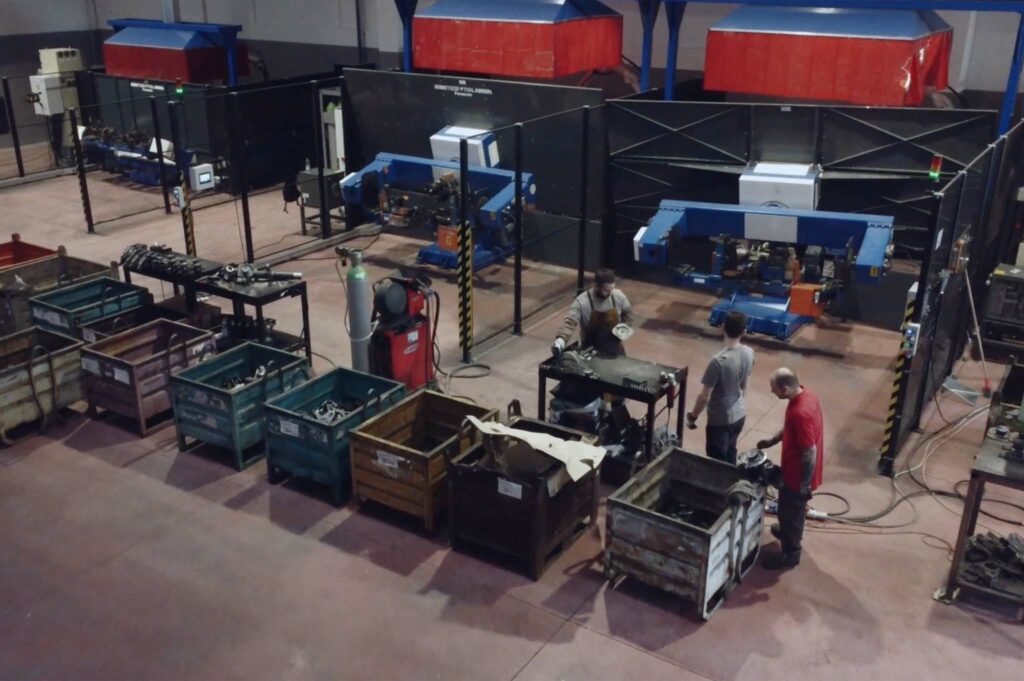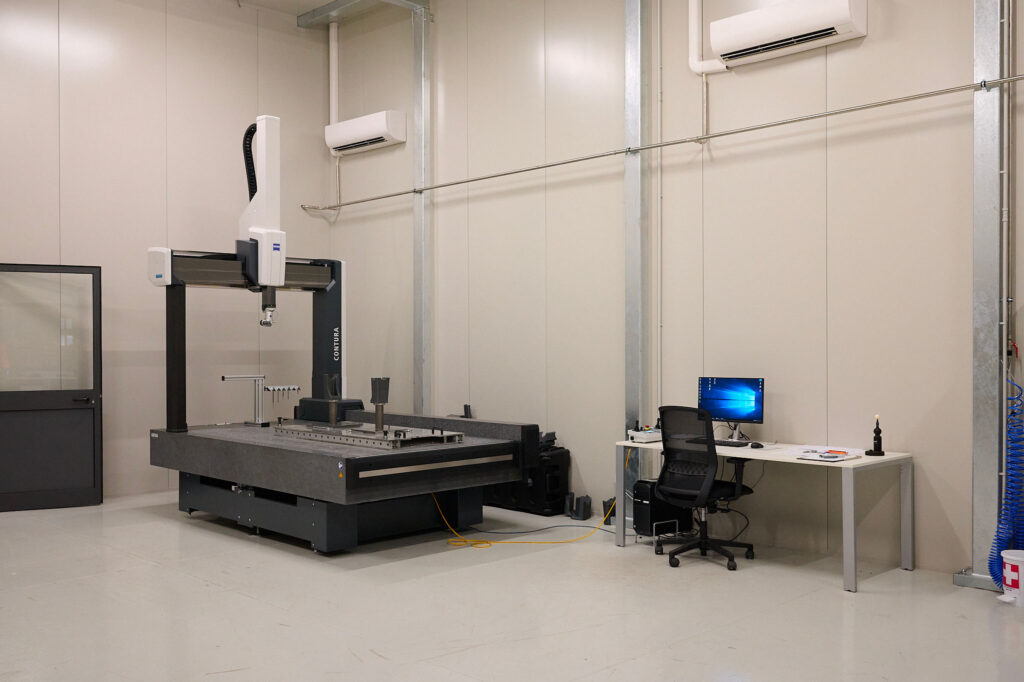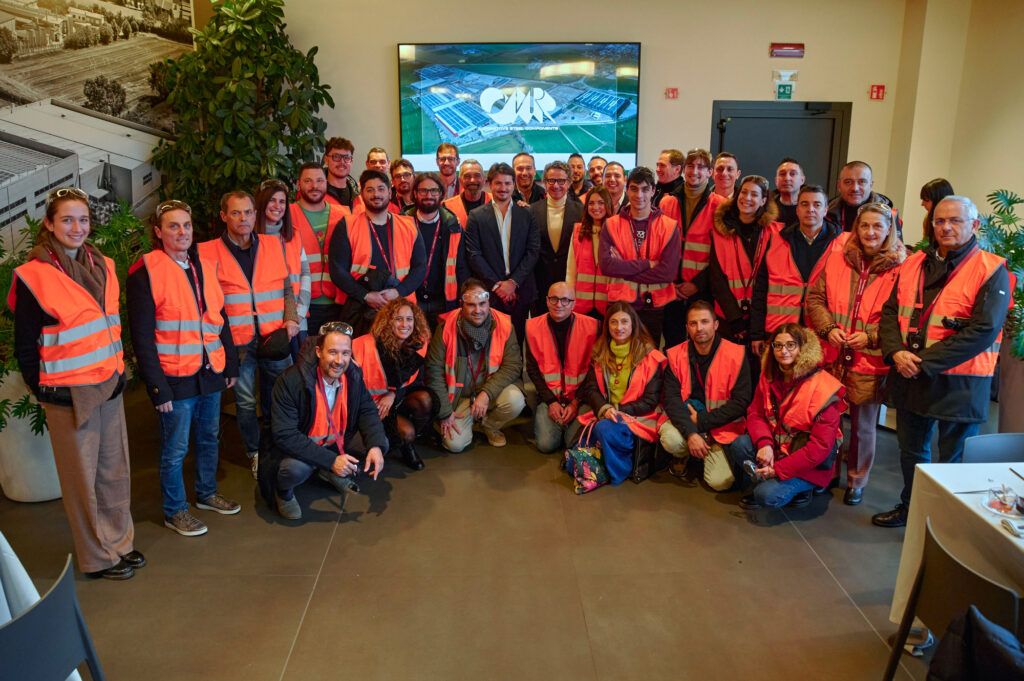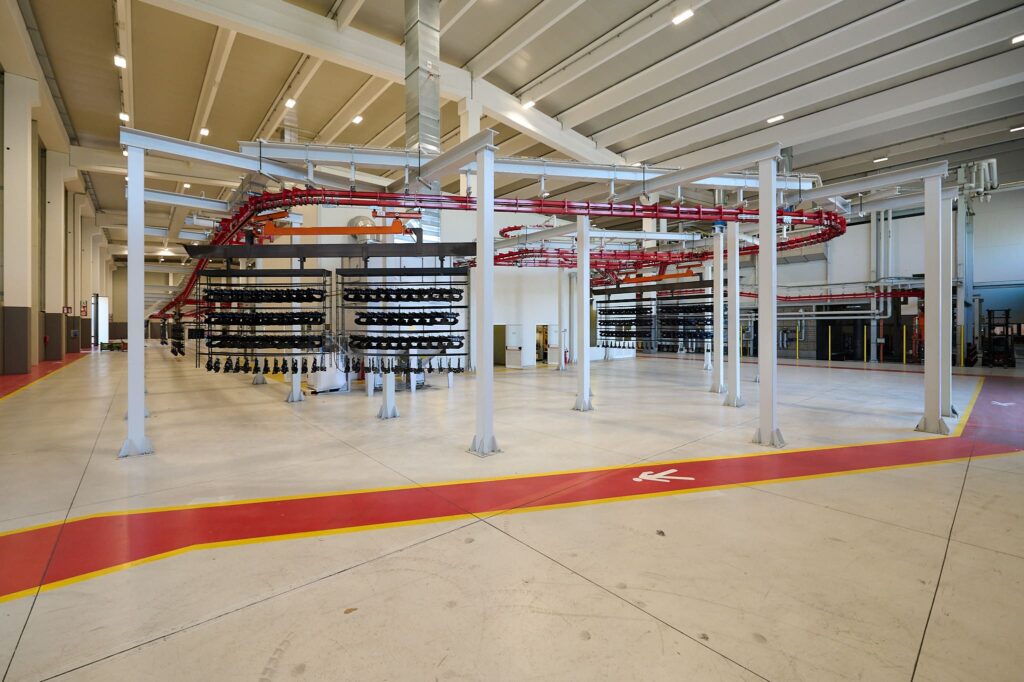Welding technology in the automotive industry has evolved significantly over time, thanks to the advancement of industrial automation solutions. Within the OMR Spa company, the robotic welding system represents a crucial element in the entire production cycle.
Robotic welding establishes itself as the preferred process for large-scale production, as it guarantees an exceptional level of efficiency and precision. The presence of highly skilled operators, combined with strict quality controls and the adoption of innovative technological solutions, ensures that every component meets the high standards required.
At OMR, the design and manufacture of equipment related to the welding process takes place in-house, with the aim of preserving and continuing to constantly enrich its know-how, thus ensuring results that always meet customer expectations.
Welding robots
The core of the system is the robot itself, a highly specialized machine connected to a centralized database that records all process parameters for each individual component. Equipped with articulated robotic arms and advanced welding tools, the welding robot is programmed by highly specialized experts: settings are set that guide the robot through the optimal welding trajectory for each component, ensuring consistent and accurate results.
One of the distinctive features of the welding robot is its ability to work on a wide range of parts and geometries. Advanced programming allows the robot to adapt to variations in part geometry, ensuring that each weld is performed accurately even with small variations. This flexibility proves especially valuable in manufacturing environments with a wide range of parts.
The robot constantly records key process parameters, such as electric current, voltage and wire feed rate, keeping a detailed track of every weld performed. This continuous recording not only provides security for the customer but also serves as a basis for quality control. Each welded part is subjected to a rigorous verification process, during which weld seams are analyzed and compared with required quality standards and, if applicable, specific customer needs.
Robotic islands
OMR welding departments have more than 50 welding islands strategically distributed to meet production needs. Most of these islands are composed of single robots. However, operational flexibility is best expressed when dual robots are used, an option used where parts are symmetrical, require balanced welds, and involve high volumes.
This approach aims to maximize efficiency, ensuring a more consistent and efficient production flow.
Welding robot programming
In welding programming and startup processes, the experience of the programming operator plays a key role. His expertise directly affects the conformity of the result to the final version of the welding program.
The programming of the welding robot always goes through the creation of an initial part that is analyzed using destructive techniques. This approach allows for an iterative process, correcting any defects found during the analysis phase. For example, if a weld that is too thin or an excessively penetrated weld is detected, the operator makes changes to the welding program to resolve these deformities. This continuous improvement cycle continues until the laboratory provides approval to start mass production.
Even during the restart of production of a previously made part, when the welding jig is put back into operation, a thorough analysis is performed. This practice is essential to ensure adjustment to any changes on the robot geometry. Since the robot has no inherent intelligence, the process of restarting production requires continuous analysis. Even if the welding program already exists, verification is performed at each restart, ensuring consistency and accuracy in the results obtained.
Robotic welding VS manual welding
In the Automotive Industry, the choice between robotic and manual welding is mainly determined by the volumes and sizes of components to be assembled. Robotic welding is distinguished by its efficiency and speed, while manual welding requires the skill and experience of a certified operator.
At OMR, robotic welding prevails over manual welding. The latter is mainly used for prototyping and pre-series production of components.
Manual welding represents an essential preliminary stage before proceeding with robotization. This phase allows dimensional verification of components and the production of prototypes to be thoroughly tested by the customer. Once this manual validation phase is passed, the process is automated by programming the welding robot for mass production.
In addition, manual welding is the ideal choice for low volume production, typically up to 100/200 parts per year, especially when large components involving smaller volumes are involved.
Certified operators with welding licenses play a key role in this phase. They ensure the precise execution of welds that are not yet supported by robotics, guaranteeing the quality and integrity of the assembled components.
Quality control
In OMR production process, the quality control phase is of crucial importance, both for manual and robotic welding.
After the initial programming, the quality laboratory performs micro and macrographic analysis following European standards and customer specifications. This iterative approach allows any defects in the welding program to be corrected before mass production begins.
Robotic welding has enthusiastically embraced innovative technologies, such as seam finder, a laser/optical system that corrects the robot’s trajectory in response to changes in part geometry. Laser scanning before welding allows the robot to correct the welding position, ensuring accurate results that meet the required standards.
A distinctive aspect of robotic welding is the continuous recording of process parameters, such as current, voltage and wire feed rate. These parameters are constantly monitored and recorded in the central database for complete control.
The welding robot is equipped with a sophisticated workpiece presence control system, which uses a camera to verify the correct positioning of components on the jig. Visual inspection of the weld bead is performed afterwards, ensuring compliance and identifying any defects.
Manual welding is also subject to the same rigorous testing as robotic welding, with accurate recording of parameters in the company database. This ensures that even manual welding is subject to detailed control, helping to ensure quality and accuracy.
The Welding Procedure Specification (WPS) is a key document that certifies the correct setting of welding parameters for both manual and robotic operations. Developed to ensure uniformity and compliance with quality and safety standards, the WPS ensures the repeatability and consistency of welding operations.
OMR established expertise in robotic welding is a benchmark in the field of industrial automation. With a team of highly skilled operators, rigorous quality controls and the adoption of the latest technology, OMR is at the forefront of meeting the highest standards required by regulations and its customers.



